*NURSING > STUDY GUIDE > NURS 611 Exam 1 Study Guide. Latest Update. (All)
NURS 611 Exam 1 Study Guide. Latest Update.
Document Content and Description Below
Exam I Review Guide Cell Death: Necrosis vs. Apoptosis (slide 3) Necrosis Apoptosis Irreversible Rapid loss of the plasma membrane structure, organelle swelling, mitochondrial dysfunction R... egulated or programmed cell process “Dropping off” of cellular fragments Passive or accidental, occurs after severe and sudden injury Active process of cellular self-destruction Enlarged cell size (swelling) Reduced cell size (shrinkage) Pathologic (accumulation of irreversible cell injury) Physiologic (means of eliminating unwanted cells; may be pathologic after some forms of cell injury, especially DNA damage) Hypoxia #1 cellular injury (MI) Ischemia, toxin exposure, infection, trauma Elimination of harmful lymphocytes that may be self-reactive and cause deaths of cells after they perform useful functions Cellular Adaptation (slide 4): when cells adapt to the environment to escape & protect themselves from injury • An adapted cell is neither normal nor injured • Adaptations are reversible changes in cell size, number, phenotype, metabolic activity or functions of cells Atrophy: Decrease or shrinkage in cellular size, can affect any organ, most common in skeletal muscle (heart), secondary sex organs, and the brain Physiologic-early development (thymus gland undergoes physiologic atrophy during childhood) Pathologic- result of decreases in workload, use, pressure, blood supply, nutrition, hormonal stimulation, and nervous stimulation (immobilized person in bed for a prolonged time aka disuse atrophy) • Less ER and fewer mitochondria and myofilaments • Nerve loss, oxygen consumption, and amino acid uptake are rapidly reduced • Decreased protein synthesis or increased protein degradation • Malnutrition Hypertrophy: Increase in the size of cells and thus consequently increases the size of the affected organ • Heart or Kidneys Physiologic- Caused by increased demand Stimulation by hormones (ANP) and growth factors Skeletal muscle by heavy work Pregnancy Pathologic- Chronic hemodynamic overload Hypertension or heart valve dysfunction Cardiac hypertrophy by mechanical signals (stretch) and trophic signals (growth factors and vasoactive agents) Hyperplasia: Increase in the number of cells in an organ or tissue resulting from an increased rate of cellular division • Response to injury • Main mechanism is the production of growth factors, which stimulate the remaining cells to synthesize new cell components and ultimately to divide • Increased output of new cells from tissue stem cells Compensatory hyperplasia: adaptive mechanism that enables certain organs to regenerate (Liver) Pathologic hyperplasia: abnormal proliferation of normal cells and can occur as a response to excessive hormonal stimulation or the effects of growth factors on target cells (Endometriosis; imbalance of estrogen and progesterone) Metaplasia: Reversible replacement of one mature cell type by another • Found in association with tissue damage, repair, and regeneration • Usually change is not beneficial • Normal columnar ciliated epithelial cells of the bronchial lining have been replaced by stratified squamous epithelial cells • Can be reversed if irritant stopped (smoking) Cellular Metabolism (slide 5): All chemical tasks of maintaining essential cellular function, provides the cell with the energy it needs to synthesize (produce) cellular structures Energy-using process: Anabolism Energy-releasing: Catabolism Adenosine Triphosphate (ATP) “Fuel” inside living cells, needed for biological reactions for cells to function & energy stored in ATP can be used in energy-requiring reactions (anabolism) The function of ATP is not only to store energy but also to transfer it from one molecule to another Energy is stored by molecules of carbohydrate, lipid and protein which when catabolized, transfer energy to ATP Used by cells for muscle contraction and active transport of molecules across cellular membranes ATP = energy BUT needs Oxygen (Aerobic) Food & Production of Cellular Energy: Catabolism (energy-releasing) of proteins, lipids, and polysaccharides found in food can be divided into 3 phases Phase 1: Digestion Large molecules broken down into smaller subunits-protein into amino acids, polysaccharides into simple sugars and fats into fatty acids and glycerol Processes occur outside the cell by the action of enzymes [Show More]
Last updated: 1 year ago
Preview 1 out of 19 pages

Buy this document to get the full access instantly
Instant Download Access after purchase
Add to cartInstant download
We Accept:

Also available in bundle (1)
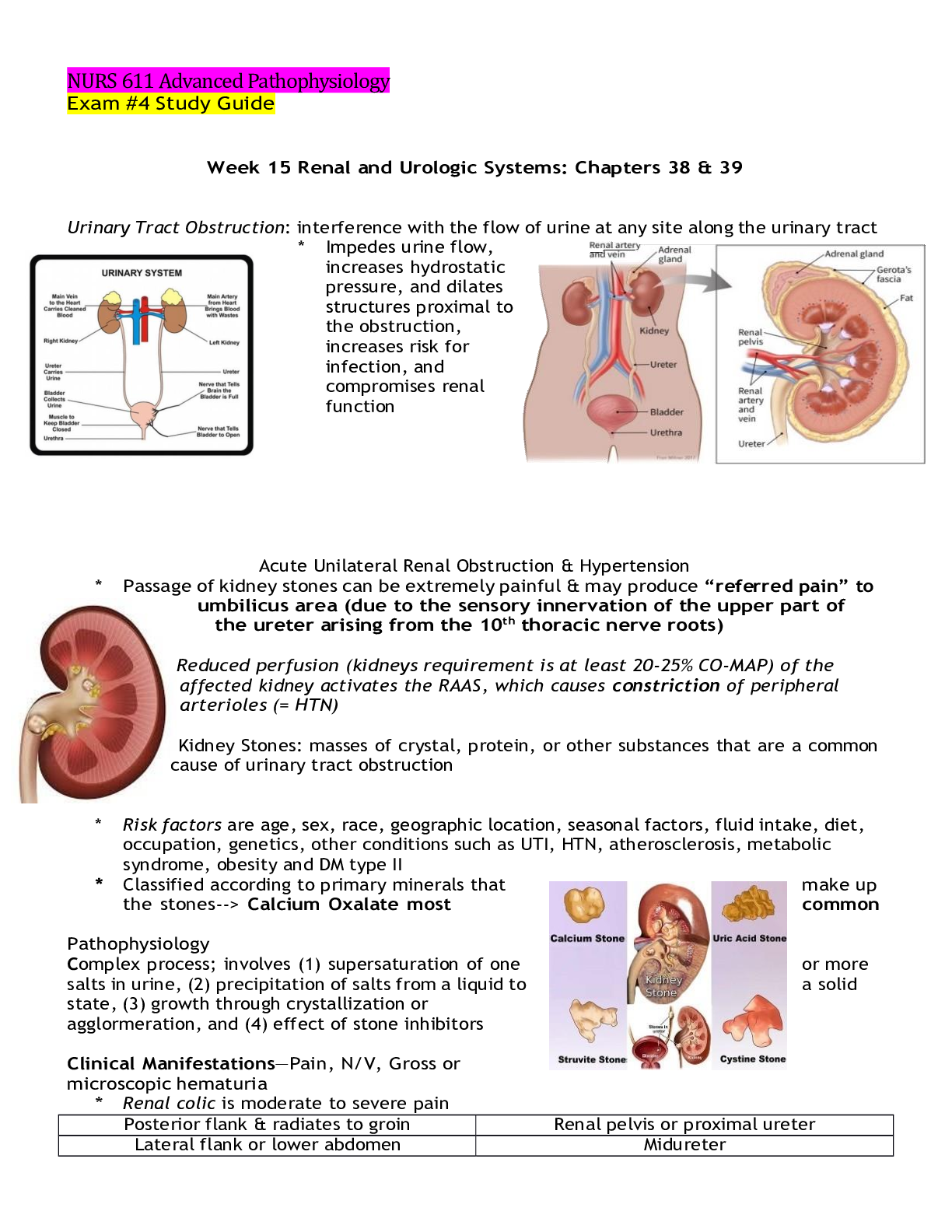
NURS 611 Exam 1 - Exam 4 Study Guides. ALL A+ RATED
NURS 611 Exam 1 - Exam 4 Study Guides. ALL A+ RATED
By Quality Suppliers 3 years ago
$30.5
4
Reviews( 0 )
$15.00
Document information
Connected school, study & course
About the document
Uploaded On
Mar 07, 2021
Number of pages
19
Written in
Additional information
This document has been written for:
Uploaded
Mar 07, 2021
Downloads
0
Views
64


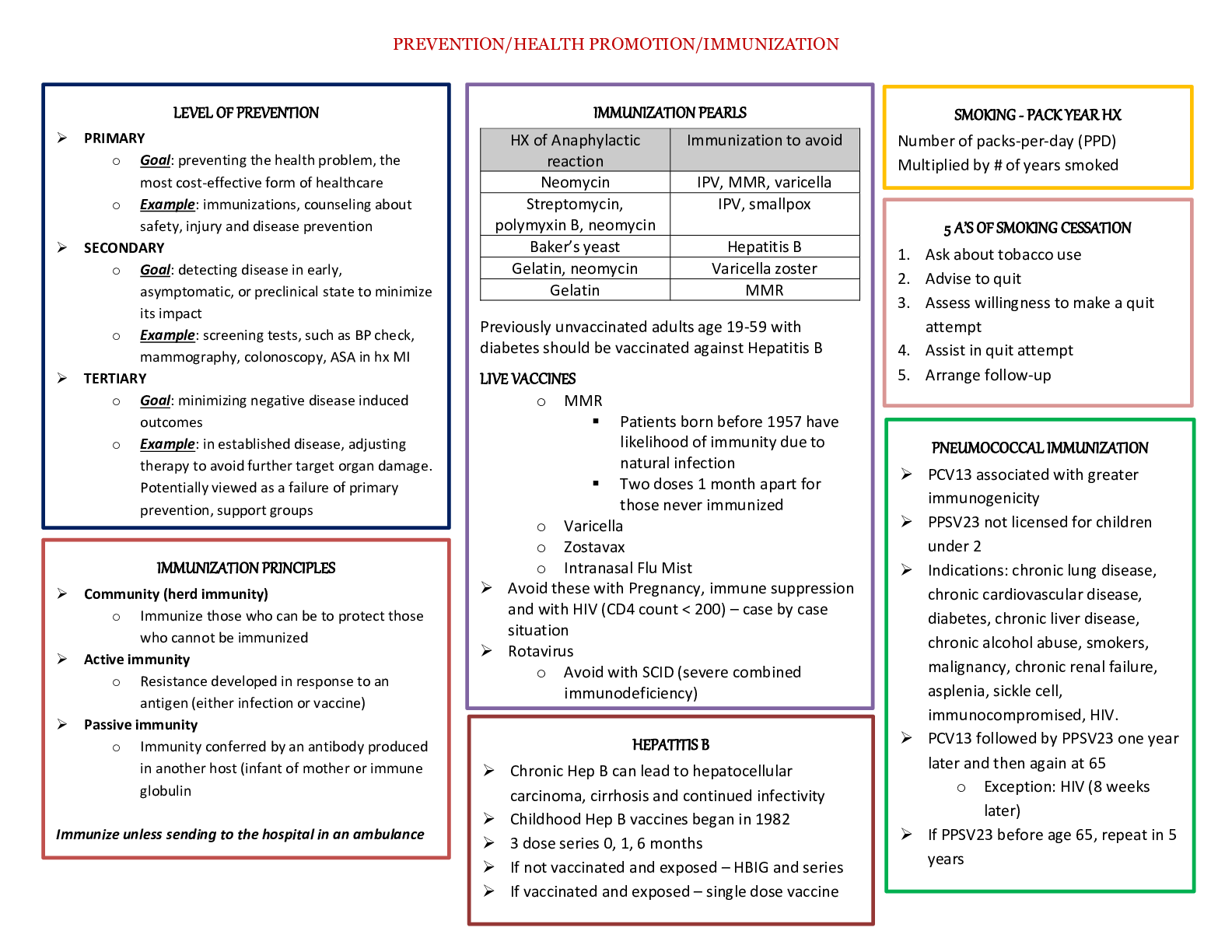


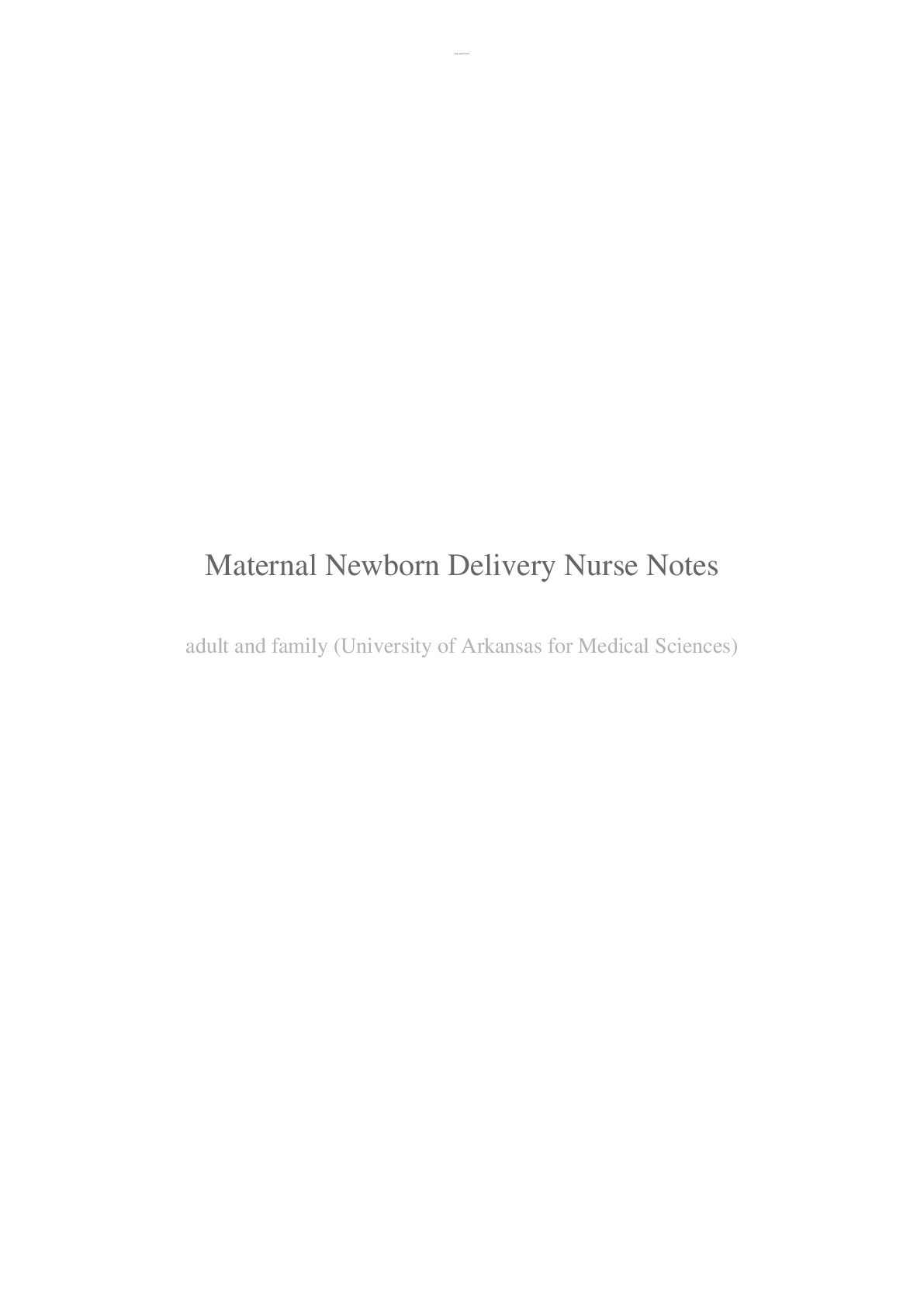


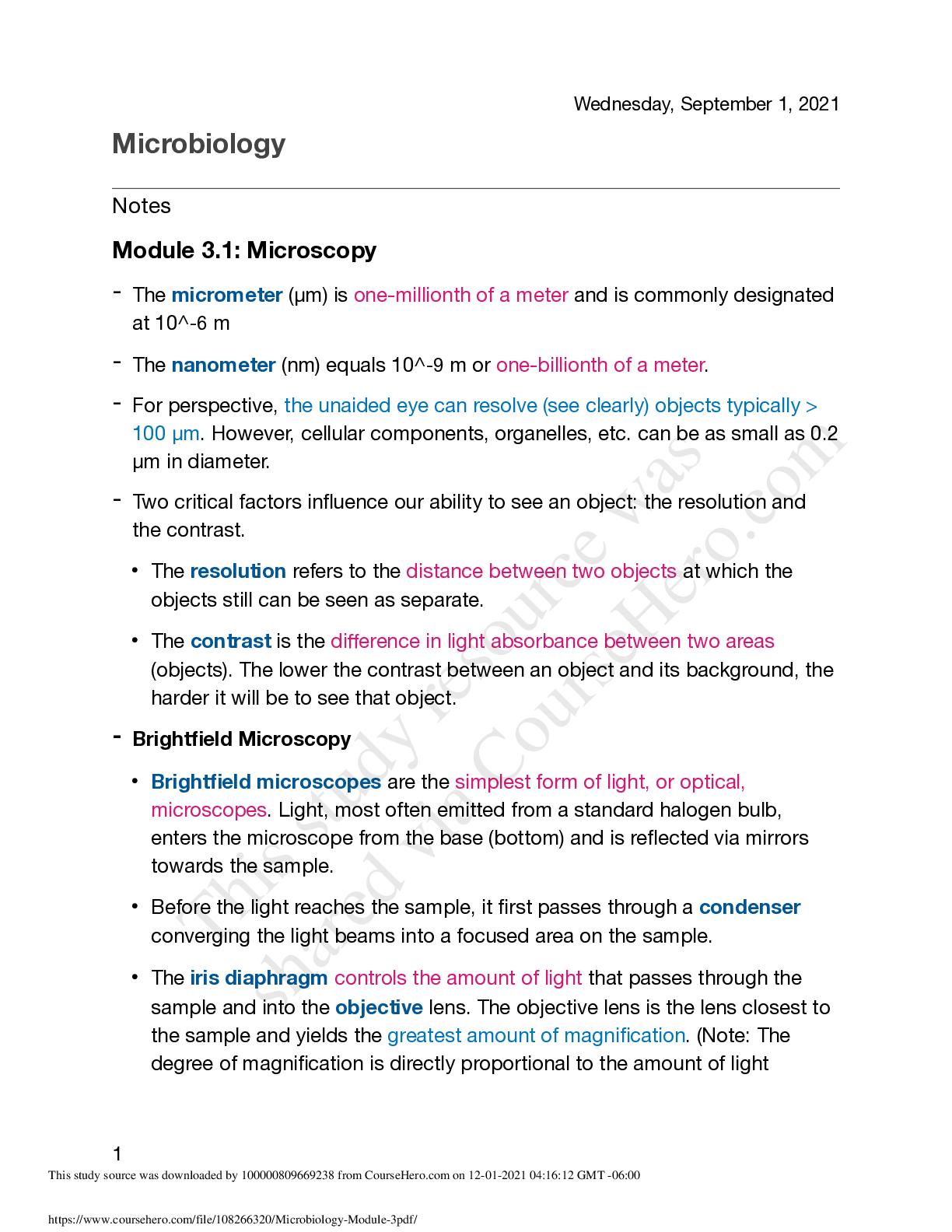



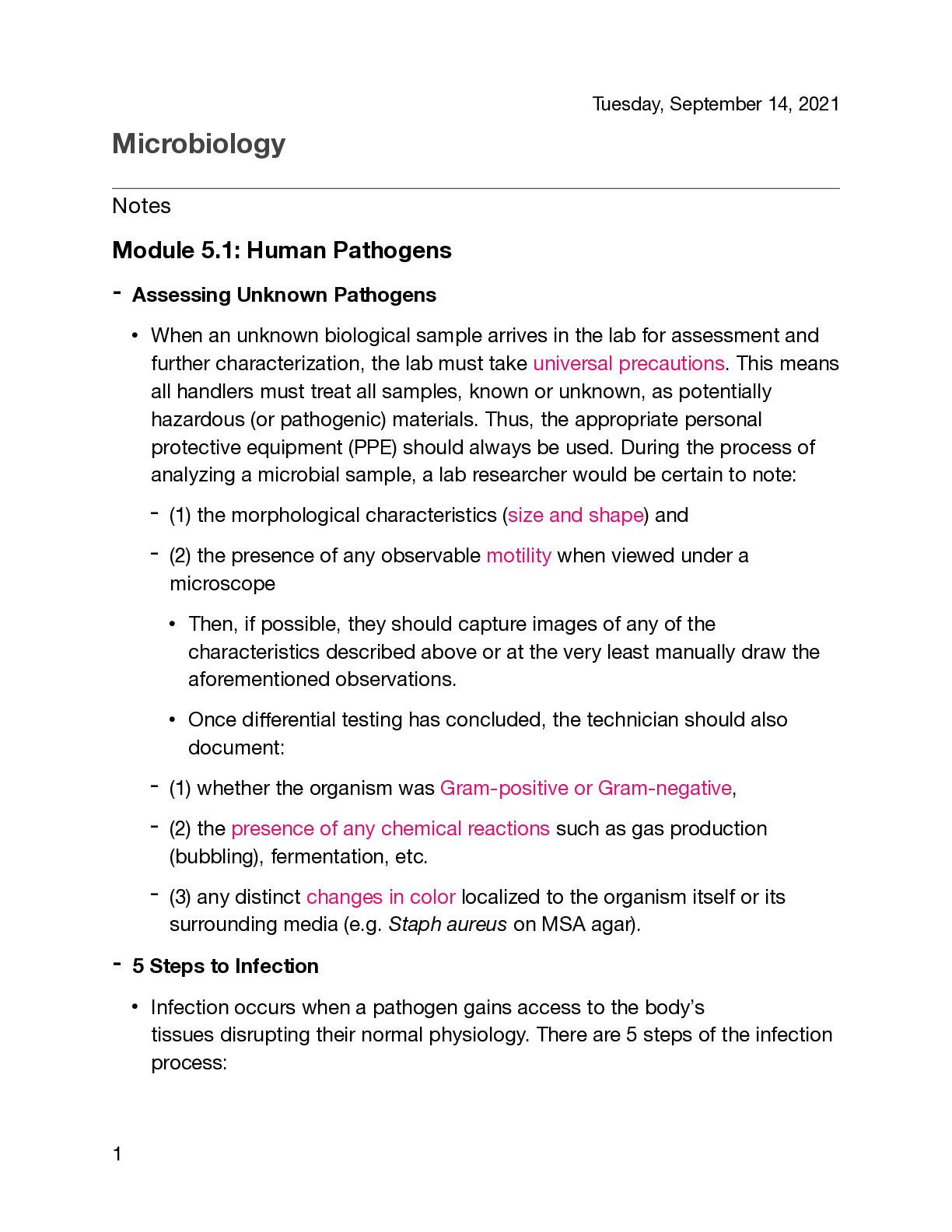
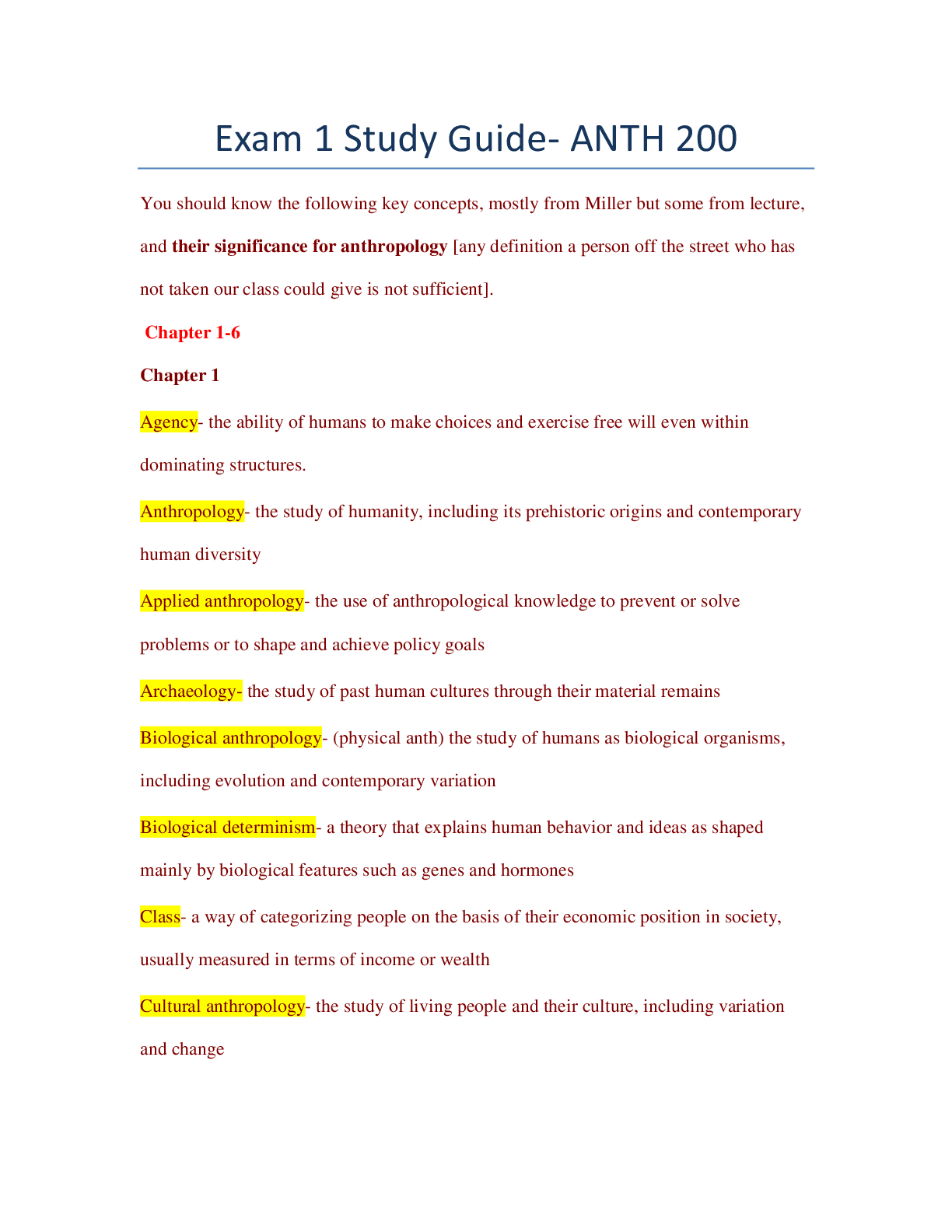
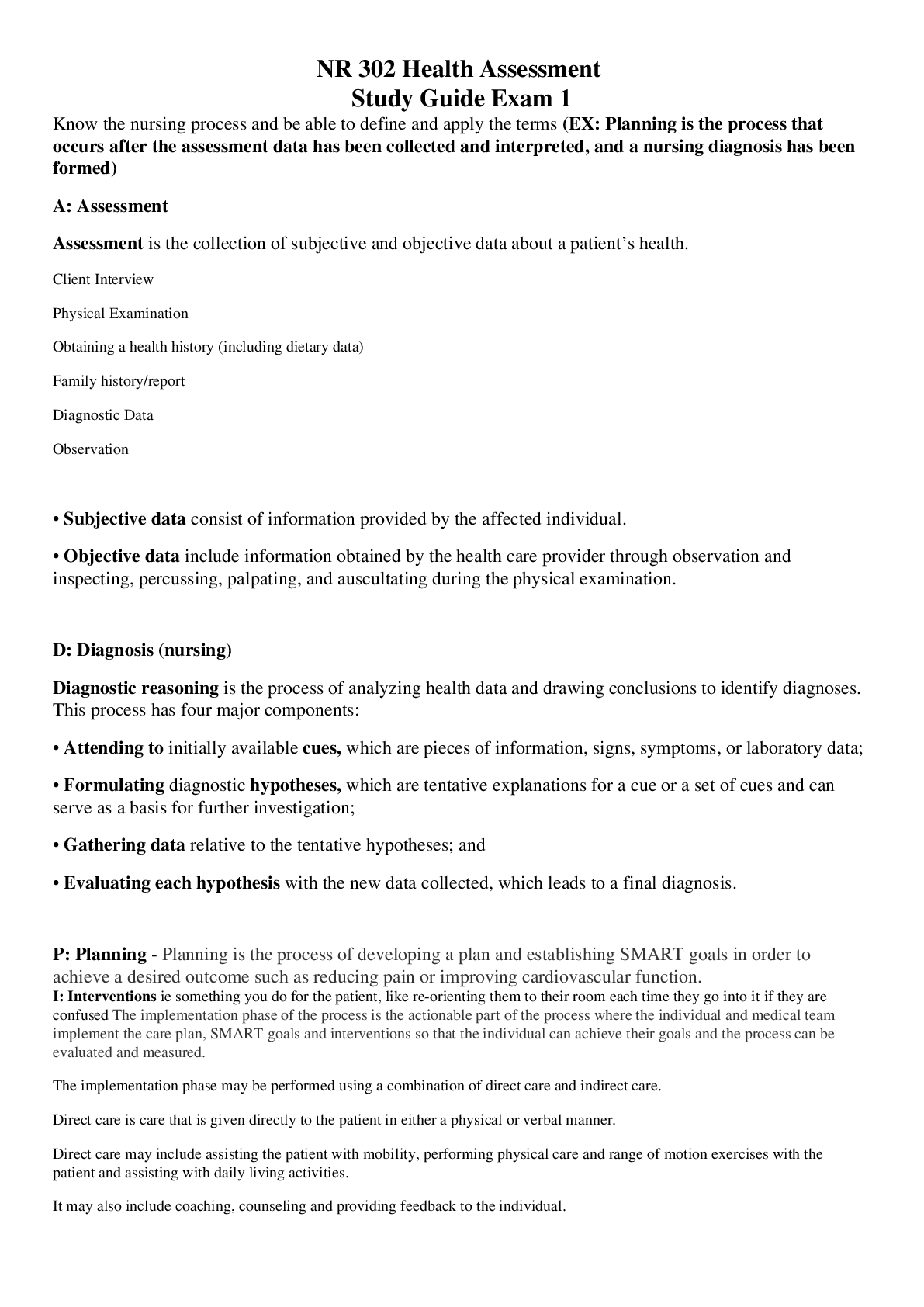





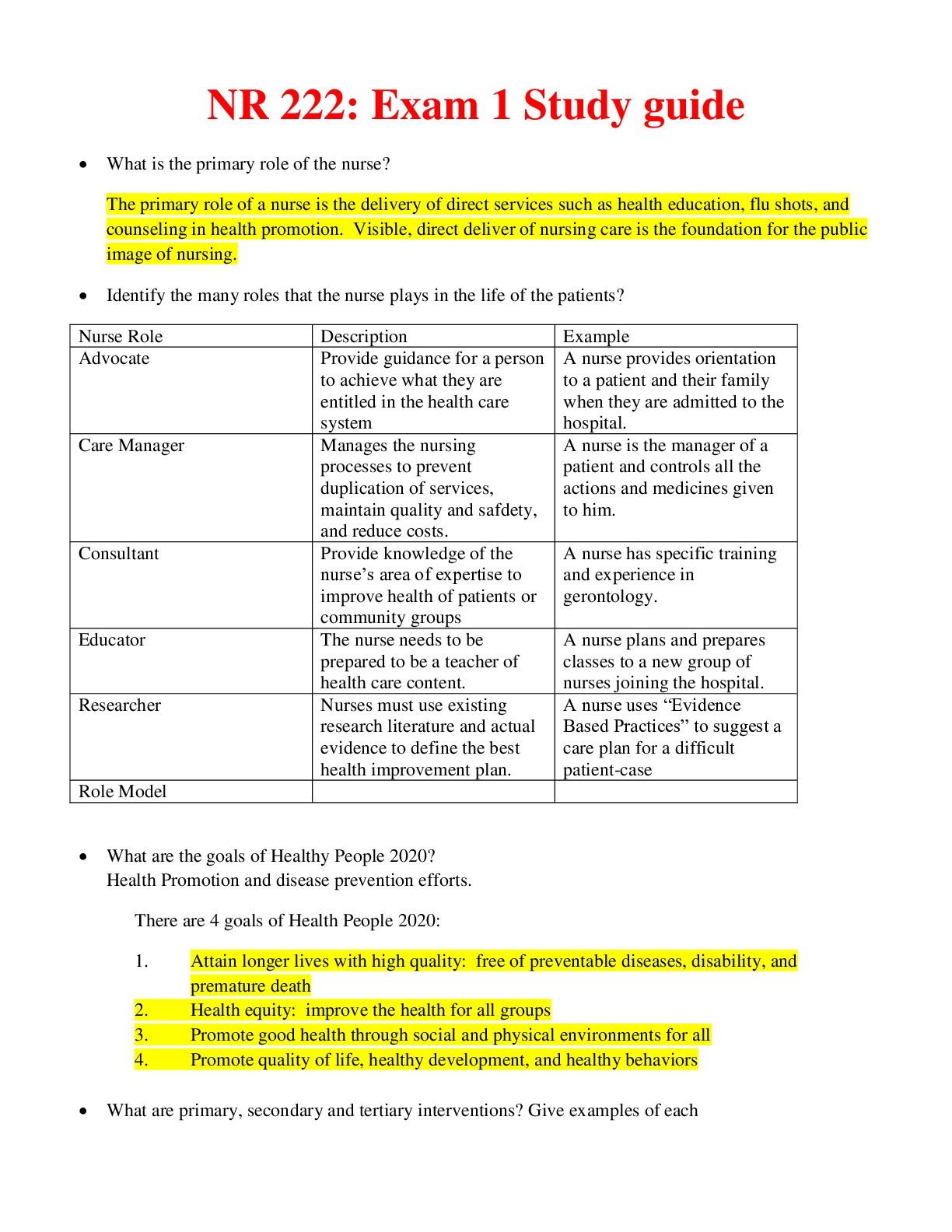


.png)

